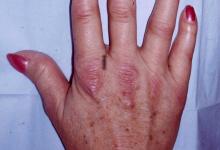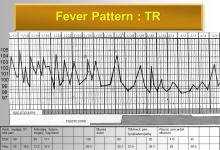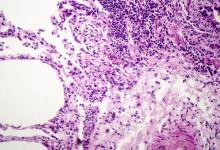SLE and Osteoporosis Save

Systemic Lupus Erythematosus (SLE) is a multisystem autoimmune disease that can present with a variety of signs and symptoms and organ involvement. Comorbidities further complicate the disease course that may lead to poor health-related quality of life and increased mortality. In one of the SLE sessions, Prof. Sandra Navarra discussed the assessment and management of osteoporosis in SLE patients, particularly glucocorticoid-induced osteoporosis (GIOP) and this article reviews the highlights and key takeaways from her talk.
A meta-analysis showed that the prevalence of osteoporosis in SLE was 13% and risk factors associated with reduced bone mineral density were: older age, longer disease duration, high cumulative doses and prolonged use of corticosteroids, postmenopausal status, lower BMI and a non-Afro-Caribbean ethnicity (Xia J, et al. 2019).
Prof. Navarra emphasized the value of bone densitometry in GIOP as DXA is the gold standard for monitoring and predicting fractures with the latter being done every 6-12 months. She continues to discuss the 2022 ACR Guideline for the Prevention and Treatment of GIOP and highlights the key recommendations on risk stratification and treatment strategies. For adult patients >40 years old, at moderate or high risk of fracture, osteoporosis treatment is strongly recommended with oral bisphosphonate over no treatment in patients with high and very high fracture risk due to fracture reduction in GIOP. Special treatment considerations in certain populations were also briefly discussed particularly in (1) the elderly who require most aggressive management due to increased fracture risk, (2) caution in giving bisphosphonates to children, taking into consideration growth and development and (3) avoidance of giving bisphosphonates, denosumab and PTH analogs during pregnancy or lactation.
The core principles of GIOP management were concisely explained by Prof. Navarra by reminding the audience to begin osteoporosis treatment at the start of glucocorticoid therapy. Additionally, to use a risk score system (from the 2014 JSBMR guideline) and initiate treatment if the score is > 3 and finally, to treat both preventively (if starting GC treatment) and therapeutically (if already on GCs > 3 months).
In the same talk, Prof. Navarra gave a brief discussion on avascular necrosis (AVN) with high dose corticosteroids as one of the risk factors. Bisphosphonates delay disease progression, reduce collapse rates and delay the need for joint replacement surgery in AVN especially when started early. Statins show promise in prevention of AVN but clinical evidence in SLE patients are lacking. Interestingly, Prof. Navarra also investigated the association of osteoporosis and AVN showing that there was no significant relationship between BMD and AVN yet emphasizing the importance of early detection and management of osteoporosis.
The management of SLE doesn’t only involve achieving low disease activity or remission. The systemic nature of this condition also predisposes patients to reduced bone mineral density particularly with the use of glucocorticoids. Therefore, early diagnosis, management and regular monitoring of GIOP is key in optimizing outcomes for SLE patients.











If you are a health practitioner, you may Login/Register to comment.
Due to the nature of these comment forums, only health practitioners are allowed to comment at this time.